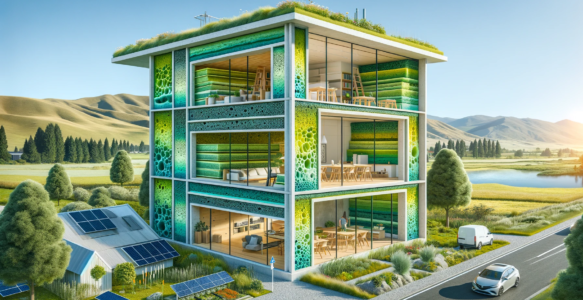
In the global effort to reduce carbon emissions, the building sector, as a significant source of emissions, increasingly plays a critical role in environmental sustainability. Buildings and infrastructure contribute approximately 39% to global carbon emissions, with material extraction, manufacturing, and construction phases accounting for just under a third. This data highlights the potential to reduce emissions through the use of more sustainable materials and technologies.
The Innovative Potential of Algae Foam
Algae foam, as an emerging building material, offers an effective way to reduce embodied carbon emissions in construction. It is manufactured using algae, a renewable resource, which helps reduce reliance on traditional building materials such as plastic foam and mineral fibers, and also lowers energy consumption and corresponding carbon emissions during building operations through improved insulation.

Credit: Wyss Institute at Harvard University
Prospects for Algae Foam in New Zealand
New Zealand, with its strong focus on environmental protection and sustainable development, is uniquely positioned to promote the use of algae foam. Firstly, the country has abundant marine resources, including a wide variety of algae species, which provide raw materials for local production of algae foam. Secondly, New Zealand’s building regulations and policies are gradually emphasizing enhanced energy efficiency and reduced environmental footprints, aligning well with the insulating and carbon-reducing properties of algae foam.
Environmental Impact
Using algae foam can significantly improve the energy efficiency of residential and commercial buildings, reducing energy consumption and indirectly decreasing carbon emissions from energy production. Additionally, the growth process of algae absorbs carbon dioxide, further enhancing the eco-friendliness of this material. When buildings are demolished or remodeled, algae foam, as a biodegradable material, has minimal environmental impact during disposal.
Sustainability and Innovation
To promote the application of algae foam in New Zealand and globally, ongoing research and development are needed to optimize its production process and improve material performance. Cooperation between the government and private sector, such as through subsidy policies or tax incentives to support the research and commercialization of algae foam, will positively impact the widespread adoption of this new material.
At Biomimicry NZ, we see huge potential in algae foam as a sustainable building material and look forward to collaborating with researchers and innovators both domestically and internationally to explore and develop the environmental and social value of this material. By mimicking nature, we can bring revolutionary changes to the building industry and achieve a greener, more sustainable future.

